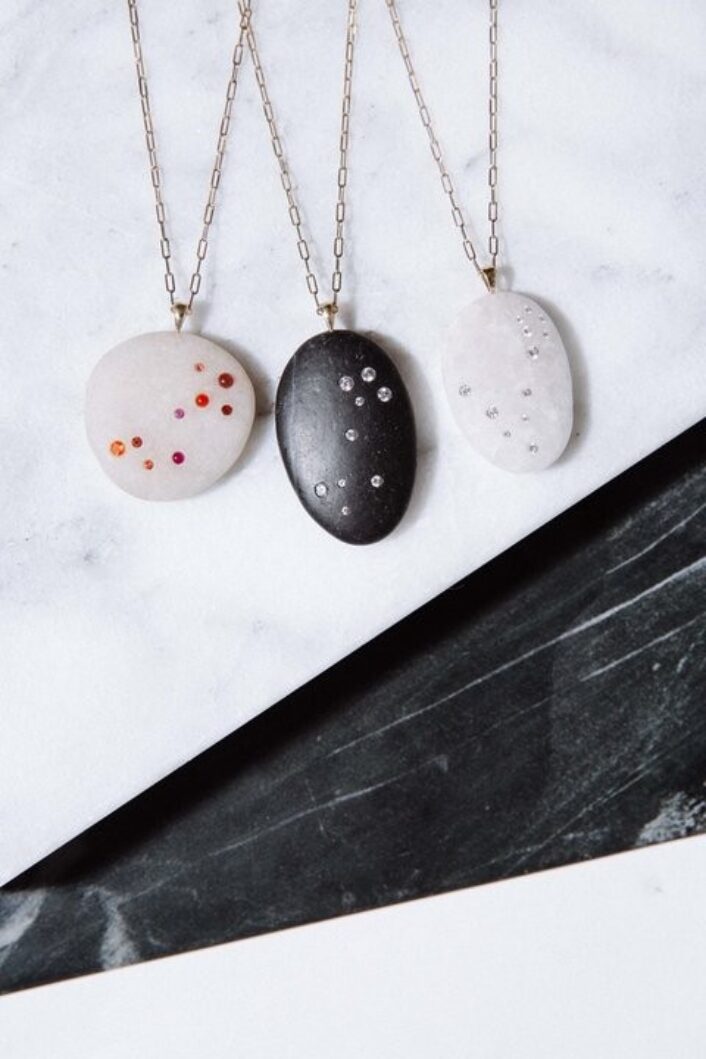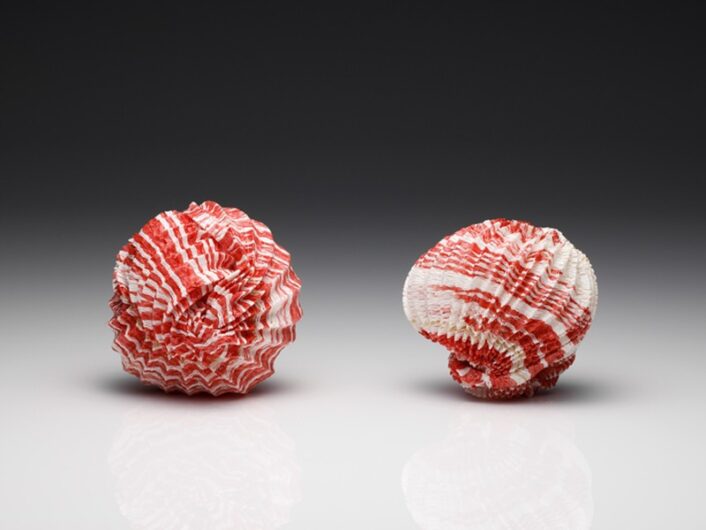Culture
Cartier’s panthers
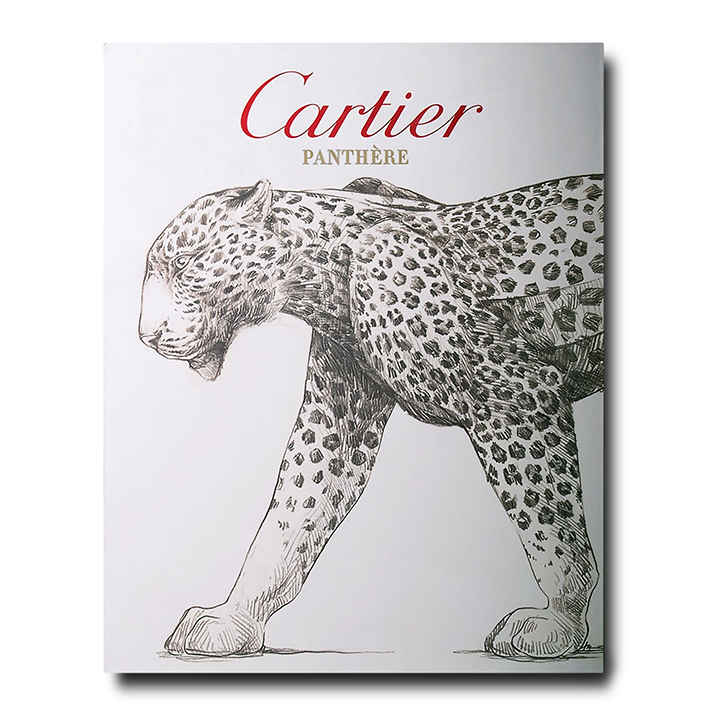
Cartier Panthere… a beautiful book featuring illustrations of the illustrious panther in Cartier designs throughout the past century.
Image courtesy of: Assouline
For more than one hundred years, the French house of Cartier has been designing jewelry inspired by the panther. Animals are not new to jewelry, however there are few as elegant and sublime as felines. The panther entered into Cartier’s collection 1914, thanks to an illustration drawn by George Barbier for an exhibition invitation. The specific image was commissioned by Louis Cartier and features a black panther lying at the feet of a beautiful woman who wears a long gown and a strand of pearls.
Barbier chose the panther because panthers were, at the time, quite popular in Paris. The essence of panthers emulated the mood in Paris during the post-World War I days. Panther images were features in much of the era’s home decor and women’s fashions. At the beginning of the Jazz Age, this was indeed the perfect “mascot”.
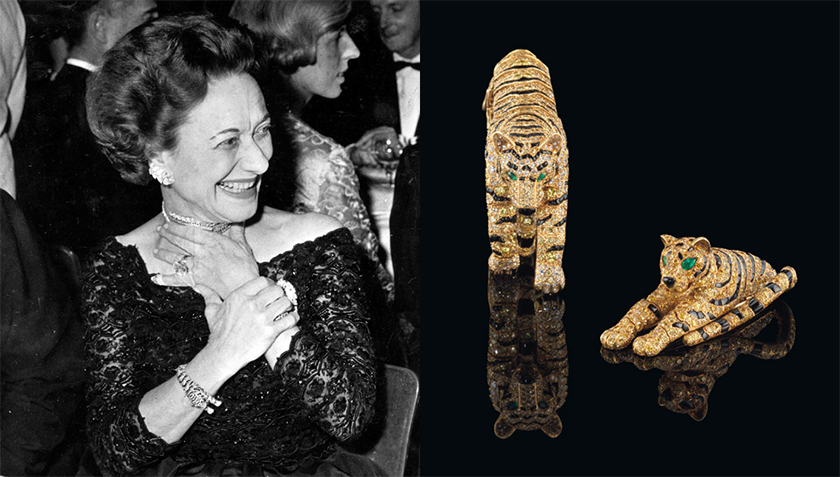
The Duchess of Windsor wearing the piece in Paris, December 1959. She appears to be glowing!
Image courtesy of: Christie’s, photographed by: Tom Wargacki and Sarah Brightman
The panther’s big breakthrough came in 1949 thanks to the Duchess of Windsor. Designer Peter Lemarchard worked on a brooch with Jeanne Toussaint… this piece was composed of a diamond panther with sapphire spots seated on top of a 152.35-carat cabochon sapphire. This one-of-a-kind piece was purchased by the Duke of Windsor for his American wife. As soon as the Duchess began wearing this stunner, the brand grew in popularity.
Following this success, Toussaint and Lemarchand presented many bold pieces during the 1950’s. Having studied panther anatomy at the Paris Zoological Park, he was well versed with the stunning creature. The designer also referred to “Animal Studies,” the book by the naturalist painter and illustrator Mathurin Meheut.
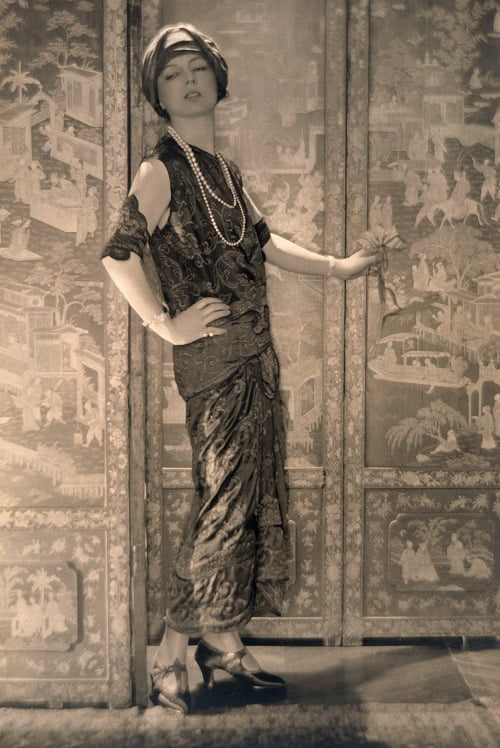
Jeanne Toussaint in 1920.
Image courtesy of: Very Life Victory Magazine
Toussaint is responsible for the “marriage” between the panther and Cartier. As a young woman, the stylish and creative Toussaint became known by the likes of Coco Chanel and Louis Cartier. As one of the three brothers manning his late grandfather’s company, Louis Cartier commissioned illustrator George Barbier to draw an advertising campaign that would reflect the shift towards Art Deco styling, it was called Dame à la Panthère.
Some say that Louis decided on the panther as a tribute to Toussaint, his “Petite Pantheré”. She was nicknamed this because she wore a full-length coat made of panther fur. Towards the end of 1913, Toussaint was hired to be Cartier’s director of bags, accessories, and objects. The relationship between Louis Cartier and Toussaint was long-lasting as Cartier shared his knowledge of jewels, settings, and techniques while Toussaint brought her zest for life, creativity, and eye for graphic and geometric design during the start of the Art Deco movement. Within two decades, Toussaint was named director of Cartier’s luxury jewelry department… all during a time that was pivotal in the house’s history.
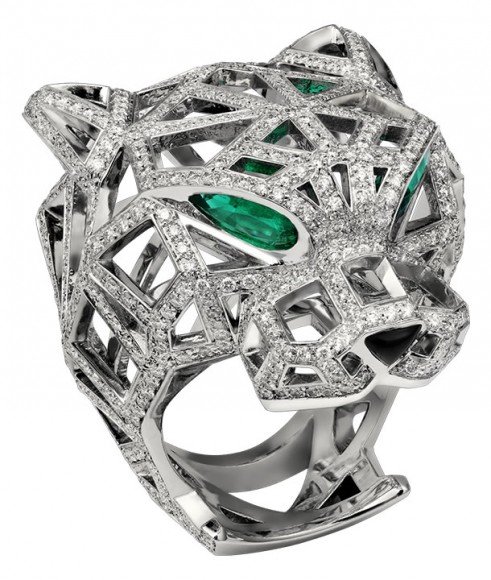
Panthere De Cartier ring. The ring is shaped like the head of a panther, the open mouth forms the opening for the wearer’s finger. The ferocity of the panther is beautifully emulated in this representation. This specific ring is made from 18k white gold with a crisscrossing lattice design. Studded with 545 diamonds that total up to 1.63 carats, the panther’s eyes are denoted with emerald while an onyx stone forms the nose.
Image courtesy of: Luxury Launches
Following the popularity of the Duchess’s panther piece, a full family of cats appeared. In 1952, a panther bracelet made from diamonds and black onyx spots appeared. In 1954, a pair of opera glasses were designed in the form of a tiger in yellow gold with stripes in black enamel. This became the inspiration for a tiger bracelet two years later. The jewel was created as an animal in “repose”… the body completely and accurately articulated. The stripes were made from calibre onyx and the eyes were made from pear-shaped emeralds. When worn around the wrist, the paws hung “freely.” Three years later, a tiger clip brooch was created to compliment the bracelet.
A museum lover, Toussaint was inspired by the historic animal jewelry designs she saw inside many of Paris’ museums. She said (courtesy of a Vogue interview from 1964), “I live in museums.” Brooches and pendants were launched with the cat positioned like the sheep in the Golden Fleece emblem created for the Golden Fleece in the 15th-century. Furthermore, hinged bracelets composed from one or two panthers reference back to the silhouettes of ancient Greek lion-head bracelets.

The beautiful bracelet made for the Duchess of Windsor.
Image courtesy of: Luis Miguel Howard Jewelry
Throughout the mid-1900’s, Toussaint’s beloved cats were worn by many high-profile collectors. To this day, the trend continues as this style has never gone out of style! Even today, Cartier continues to produce a number of panther styles each year. There is no doubt that these amazing pieces are one the most recognizable motifs in the history of jewelry.
In 1955, the French government paid tribute to Toussaint’s vast influence on jewelry and modern design and awarded her the Grand Cross of the Legion of Honor. A well deserved honor indeed!
